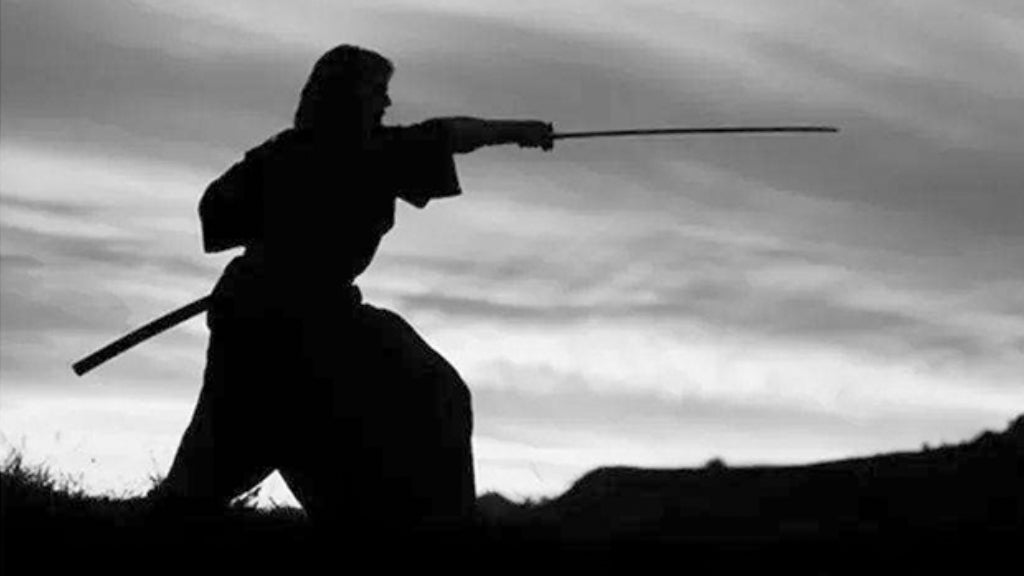Katana Blade: Symbolizes the Identity and Status of the Japanese Samurai

As the saying goes: "A layman sees the fun, an expert sees the way", most people are easily attracted by the gorgeous appearance of Japanese swords, but their knowledge of the blade is limited, mainly because it is difficult to obtain relevant information, and it is difficult to see real swords.
Therefore, those who like to buy either fake knives or sub-grade products with serious flaws in forging, or the knives are assembled knives, the hilt and scabbard, the eye-penetrating, the edge head, the tang, etc. are complete sets or not. Complete sets, new or old, are not easy to identify if they have no considerable literacy. Knives are usually kept in their sheaths, and high quality battle ready katana is only used when going out. Let me tell you a misunderstanding: knives and knives are two completely different fields of art, which are not absolutely related to each other. This concept must be clarified, otherwise it is easy to fall into logical errors.

1. The difference between real knife and fake knife in katana blade
The difference between the so-called real knife and fake knife is mainly whether the scabbard and hardware are traditionally hand-made, and they must be tailored for the blade. If a knife is assembled with a second blade, the form is strange, and even the exterior of a knife comes from all directions, and the various accessories are irrelevant, and so on are all knife lovers must pay attention to. In terms of identification, at least the edge and head on the handle must be a pair, the knife must be unsheathed and inserted smoothly, and the length ratio of the scabbard to the knife is moderate. Taking a long knife as an example, the scabbard is about longer than the knife. About three or four centimeters, the two arcs are the same. The handle of the katana blade like a white katana blade will not shake, and the thickness and length will affect the feel and balance. The silk rope on the handle is tied tightly and firmly. Pushing the silk rope with your fingers will not move it under normal conditions. The gaps left at the intersection of the silk ropes are equal in size and regular in shape. The silk rope is filled with granular sharks. Fish skin covered. Except the scabbard is lacquerware, the rest of the knife set is made of metal art, including the tan, the small handle, the Ji, the edge head, and the eye.
2. The style of katana blade
If the samurai outfit is the complete outfit of a samurai, then the tan can be said to be the samurai's face. Especially in the Edo period, which is quite close to the end of the Ming Dynasty to the middle of the Qing Dynasty in China, the first thing a samurai encounters on the road is the tan on the saber. Tan's artistic taste represents the style and quality of a samurai, so Tan workers do their best to maximize Tan's creativity. Tan-workers not only focus on metal properties, but also study painting and calligraphy. The grades of tan-workers depend on the subject matter, composition and layout, construction, use of materials and preservation conditions. Therefore, tan can be said to be the soul of knife equipment, and it is also the unique art of Japan's leading sword culture in other countries.
The handle of katana blade is called handle in Japanese. The handle must have a good grip in use. The thickness is appropriate. Too thick or too thin is not easy to use. The length also affects the balance of the entire knife. The most difficult thing to master is the use of the knife. Both power and speed are balanced. The powerful one is slow, and the fast one is less powerful. The two resist each other. Therefore, the design of the handle has a key influence on whether the function of the knife can be fully exerted. In addition to its practicality, the handle is also a symbol of the samurai's dignity and taste in art. In the field of research and appreciation of Japanese swords today, the artistic value is far greater than the practical value. The handle is first covered with two pieces of wood, then the wooden handle is covered with mackerel skin, and the outside of the mackerel skin is tied with silk rope. It seems easy, but it is not. Each procedure is completed by professional craftsmen, and the difficulty is beyond the imagination of outsiders.
Mackerel skin is commonly known as shark skin. In fact, the two are completely different materials. Mackerel is native to the area from the East China Sea to the South China Sea. It is about a foot and a half long. The skin is covered with sharp stone particles. They are like pearls, the primary color is beige, and can be dyed in various colors according to the user's preference. The sharp stones are polished so that they will not hurt the hands. Because of their rough appearance, they can be grasped tightly. When fighting, the knife is not easy to slip off, and it is tied outside. The silk rope can be tied tightly and firmly, and the silk can absorb sweat and prevent the hand from being hurt by excessive friction between the palm and the skin of the shark.
In the center of the back of the shark skin, there is a stone as large as a pearl, each of which has only one. The particles around the large stone become smaller in order, and the second largest around the large stone forms the state of the stars and the moon. It is the most precious of the whole fish skin, and the price is also the highest. It has the appearance of a king, and the situation of reigning the world is favored by the warriors. As for the handle wire rope, it is the highest grade of hand-woven gold-colored handle rope made of brocade. These high-grade products are usually used on the ceremonial swords or Weifu swords collected by the palace or shrines. It is common for a knife to have several hilts at the same time. It is a fashionable style for samurai to change hilts in order to match different clothes or attend different occasions. The connotation of the katana blade hilt fully shows the ideological level of the unity of the samurai spirit.
